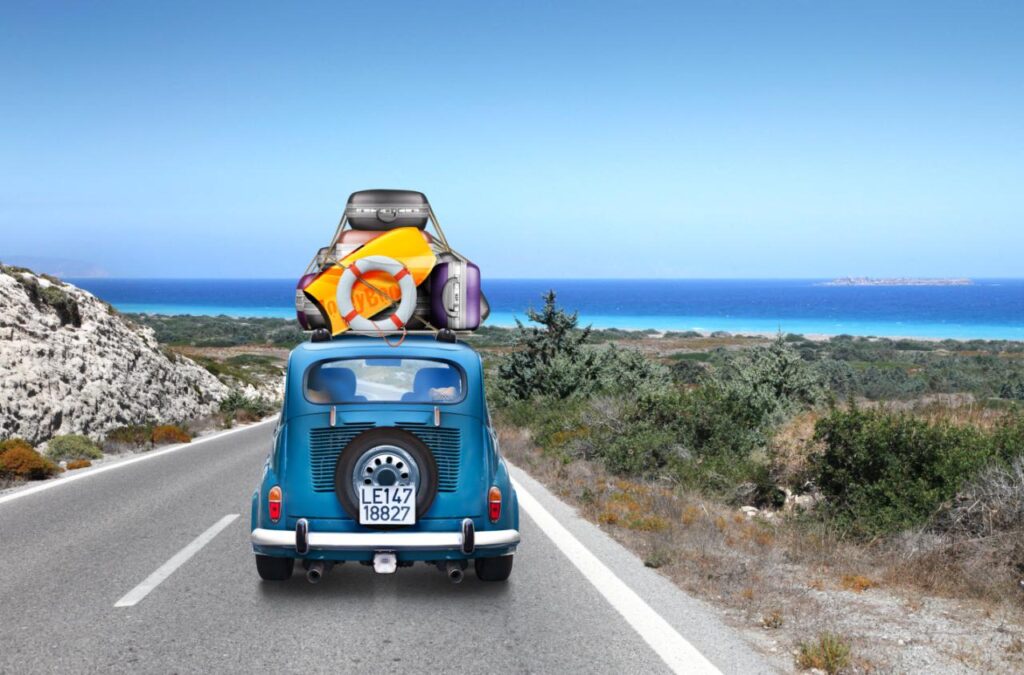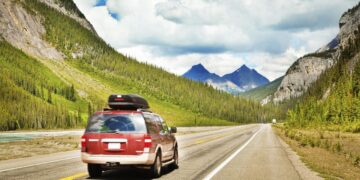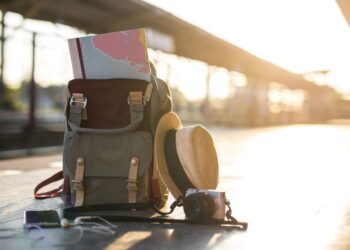There’s an undeniable allure to the open road, a promise of road freedom that speaks to the deepest desires for adventure, independence, and the joy of spontaneous discovery. It’s about more than just traveling from point A to point B; it’s about the journey itself, where every mile unveils unending horizons and countless opportunities for exploration. This extensive article will serve as your ultimate companion to embracing the spirit of the open road, guiding you through the essential aspects of planning, executing, and truly savoring a road trip that promises both exhilarating liberty and unforgettable vistas.
The Irresistible Call of the Open Road
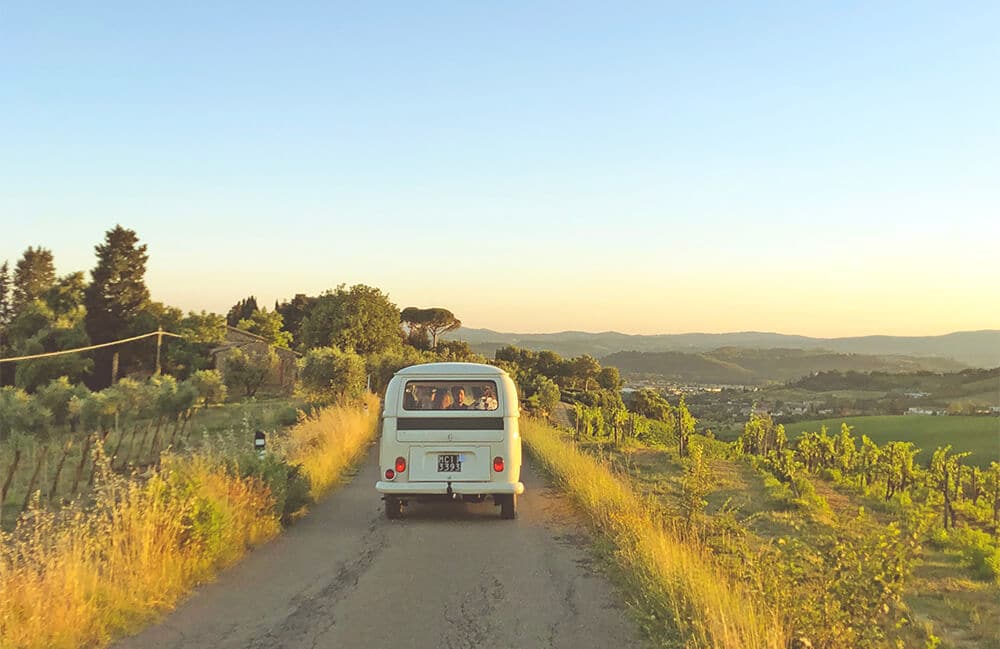
What is it about hitting the pavement that captivates so many, offering a unique sense of liberation unlike any other form of travel? It’s a blend of control, discovery, and connection.
A. Unparalleled Flexibility and Spontaneity: Unlike rigid flight schedules or train timetables, a road trip offers the ultimate freedom to deviate, linger, or change plans on a whim. You can pull over for a breathtaking view, explore a quirky roadside attraction, or extend your stay in a charming town without consequence. This spontaneity is a core element of road freedom.
B. Access to Hidden Gems: The open road allows you to venture beyond major cities and popular tourist hubs, leading you to remote natural wonders, quaint small towns, and unique local experiences that are inaccessible by other means of transport. These often become the most memorable parts of the journey.
C. Deeper Connection to the Landscape: Traveling by car allows for a continuous and intimate connection with the changing scenery. You witness the subtle shifts in terrain, vegetation, and climate, providing a profound appreciation for the diverse landscapes that unfold before you. Every turn of the wheel unveils a new vista.
D. Cost-Effectiveness (Often): For groups or families, and when planned smartly, road trips can often be more budget-friendly than flying, especially when factoring in accommodation flexibility (camping, budget motels) and self-catering options. You have more control over your spending.
E. Enhanced Companionship and Bonding: For those traveling with others, a road trip provides extended, often uninterrupted, time together. Shared experiences, long conversations, and navigating challenges together can significantly strengthen bonds and create lasting memories.
Defining Your Road Freedom
Before you hit the gas, it’s crucial to define the essence of your road trip. What kind of freedom and what type of unending horizons are you truly seeking?
A. Purpose and Theme of Your Road Trip: What is the underlying goal of your journey?
1. Nature and Scenic Routes: Focusing on national parks, coastal drives, mountain passes, or desert landscapes. The journey itself, and the views along the way, are the main attraction.
2. Cultural and Historical Exploration: Tracing historical routes, visiting multiple cities for museums and landmarks, or exploring specific cultural regions and local traditions.
3. Adventure and Activity-Based: Planning routes around specific outdoor activities like hiking, climbing, surfing spots, or kayaking destinations.
4. Culinary Journey: Mapping out stops based on regional cuisines, local eateries, food festivals, or unique culinary experiences.
5. Family Fun and Bonding: Designing a trip with kid-friendly attractions, ample stops for play, and diverse activities to keep everyone entertained.
6. Solo Discovery and Introspection: A journey designed for self-reflection, personal challenge, and the freedom to go wherever your mood takes you.
B. Duration and Timing: How much time do you have, and when is the best time to embark?
1. Weekend Warrior Escapes (2-3 days): Perfect for exploring a nearby region, a short scenic loop, or visiting a specific event.
2. Extended Adventures (1-2 weeks): Allows for cross-state travel, exploring a major region in depth, or a focused themed trip.
3. Grand Expeditions (3+ weeks): Ideal for cross-country drives, exploring multiple regions, or deep immersion in a specific interest.
Consider seasonal weather patterns, public holidays (affecting crowds and prices), and road conditions (e.g., snow in mountains, heat in deserts).
C. Travel Style and Budget: How do you prefer to travel, and what are your financial parameters?
1. Budget-Friendly Exploration: Prioritizing camping, budget motels, cooking your own food, and free activities.
2. Mid-Range Comfort: A mix of comfortable hotels, a few nice meals out, and moderate activity spending.
3. Luxury Road Trip: Staying in boutique hotels, fine dining experiences, and opting for more exclusive tours or experiences.
4. Vehicle Choice: Will you use your own car, rent a car, or opt for an RV/campervan for more flexibility and accommodation savings?
Strategic Planning and Preparation
While spontaneity is a hallmark of road trips, a solid plan provides the foundation for truly unending horizons. Meticulous preparation can prevent headaches and enhance enjoyment.
A. Route Planning and Itinerary Development: This is the heart of your road trip.
1. Map Your Core Route: Use online mapping tools (Google Maps, Waze, Roadtrippers) to outline your main path. Identify major cities, national parks, or attractions you want to hit.
2. Research Points of Interest: Look for unique roadside attractions, scenic viewpoints, quirky towns, local restaurants, or lesser-known natural wonders along your route.
3. Estimate Drive Times: Account for stops, traffic, and rest breaks. Don’t overschedule your driving time. Aim for 4-6 hours of active driving per day as a comfortable maximum.
4. Build in Flexibility: Leave room for unplanned detours or spontaneous discoveries. Don’t book every single accommodation in advance unless absolutely necessary.
5. Consider Circular Routes: If starting and ending in the same place, a loop can maximize different scenery.
B. Vehicle Preparation and Maintenance: Your car is your most important companion.
1. Pre-Trip Check-up: Have your vehicle thoroughly inspected by a mechanic (tires, brakes, fluids, battery, lights).
2. Emergency Kit: Pack jumper cables, a spare tire (and knowledge of how to change it), a basic tool kit, flashlight, reflective triangles, and a first-aid kit.
3. Tire Pressure and Tread: Check regularly throughout the trip. Proper inflation is crucial for safety and fuel efficiency.
4. Fluid Levels: Ensure oil, coolant, brake fluid, and windshield washer fluid are at optimal levels.
5. Documentation: Keep your driver’s license, vehicle registration, and insurance information readily accessible. Consider an International Driving Permit if traveling abroad.
C. Budgeting and Financial Preparedness: Control your spending for true freedom.
1. Fuel Costs: This is often the largest variable. Research average gas prices along your route. Use apps to find cheaper gas stations.
2. Accommodation: Budget for hotels, motels, campgrounds, or a mix. Pre-booking can save money, but flexibility for spontaneous stops is valuable.
3. Food and Drinks: Plan for a mix of self-catering (picnics, simple meals), local eateries, and occasional splurges. Pack a cooler.
4. Activities and Entrance Fees: Account for national park passes, museum tickets, or tour costs.
5. Emergency Fund: Always have extra money set aside for unexpected repairs, medical emergencies, or unforeseen delays.
6. Payment Methods: Carry a mix of cash for small purchases and credit/debit cards. Inform your bank of your travel plans.
D. Packing Smart and Efficiently: Organize for easy access and comfort.
1. Layered Clothing: Pack versatile layers suitable for varying temperatures and climates along your route.
2. Comfortable Footwear: Essential for driving and exploring.
3. Essentials: Chargers for all devices, car charger, power bank, first-aid kit, toiletries, sunglasses, hat, reusable water bottles, reusable shopping bags.
4. Entertainment: Road trip playlist, audiobooks, podcasts, offline games, books.
5. Organization: Use car organizers, packing cubes, and soft bags for easy storage and access within the vehicle. Keep snacks and drinks easily reachable.
E. Communication and Safety: Stay connected and secure.
1. Offline Maps: Download maps for your entire route on your phone or GPS device. Cell service can be spotty in remote areas.
2. Emergency Contacts: Share your itinerary with a trusted person. Have emergency numbers (local roadside assistance, police) readily available.
3. Roadside Assistance: Consider a membership (e.g., AAA, or through your insurance) for peace of mind.
4. Personal Safety: Be aware of your surroundings, especially in unfamiliar areas. Lock your car, hide valuables, and use common sense.
Embracing the Journey
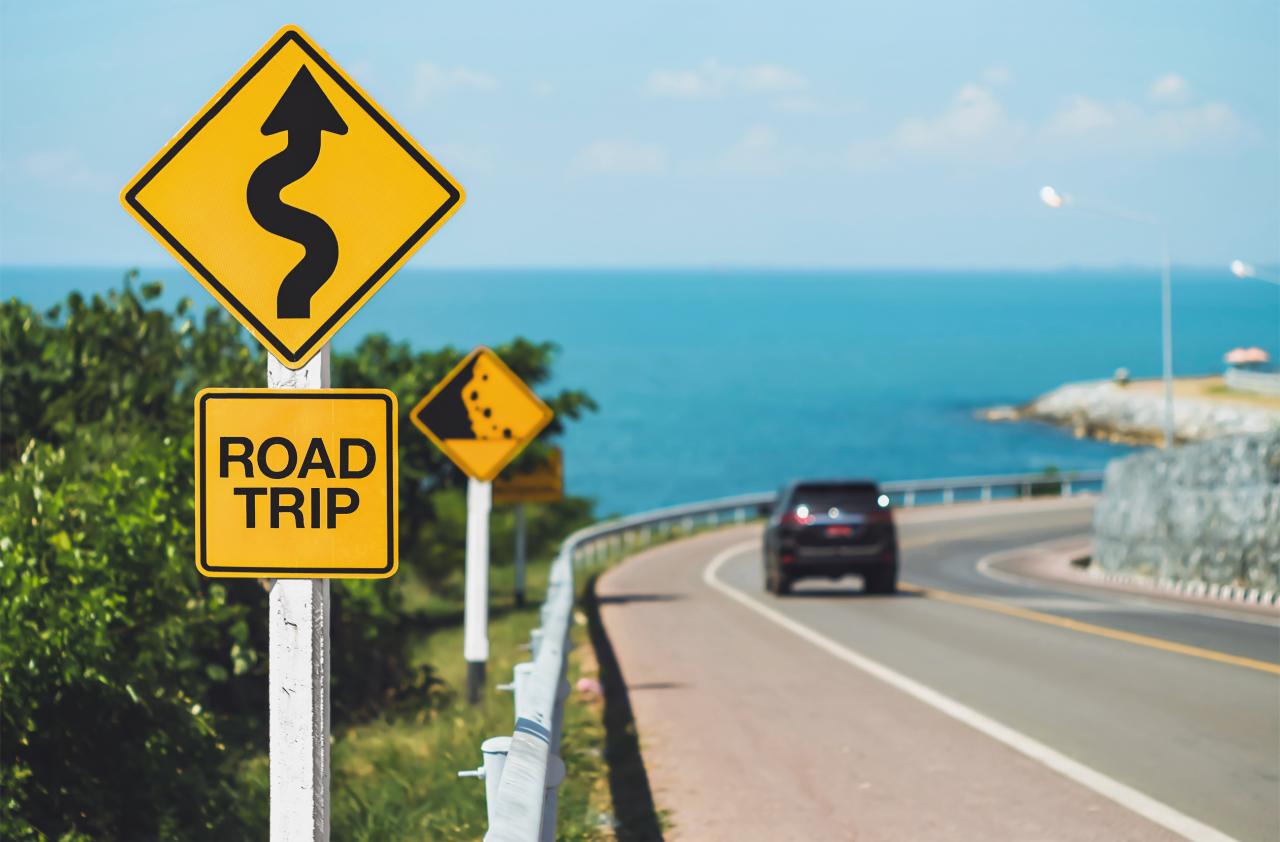
Once the wheels are turning, it’s about shifting your mindset to truly enjoy the experience and the unfolding landscapes.
A. Savor the Views: Drive Mindfully:
1. Focus on the Road, but Appreciate the Scenery: Don’t rush. Take in the changing landscapes, the expansive skies, and the subtle details of your surroundings.
2. Pull Over for Photo Ops: If a view captivates you, find a safe spot to pull over and fully appreciate it. Don’t just glance from the window.
3. Designate a Navigator/DJ/Snack Czar: Share responsibilities to keep spirits high and allow the driver to focus on the road and the views.
B. Embrace Spontaneity and Detours: This is the core of road freedom.
1. Follow Your Curiosity: If a sign for a “world’s largest” something or a local park catches your eye, go for it!
2. Talk to Locals: Ask for recommendations for hidden gems, local eateries, or unique experiences that aren’t in guidebooks.
3. Let the Road Guide You: Be open to changing your plans based on weather, unexpected discoveries, or simply a feeling that a different route calls to you.
C. Connect with Your Travel Companions (or Yourself):
1. Deep Conversations: Use the uninterrupted time for meaningful discussions, shared laughter, and reminiscing.
2. Shared Activities: Engage in road trip games, singalongs, or listen to audiobooks together.
3. Solo Reflection: If traveling alone, use the time for introspection, journaling, or simply enjoying your own company.
D. Mindful Stops: More Than Just Gas and Go:
1. Local Eateries: Skip the fast food chains at highway exits. Look for independent diners, cafes, or bakeries in small towns.
2. Farmer’s Markets/Local Stores: Stock up on fresh produce and unique local snacks.
3. Picnic Spots: Find scenic spots for outdoor meals, rather than eating in the car.
4. Stretch and Move: Take regular breaks to stretch, walk around, and prevent fatigue.
E. Document Your Journey (Thoughtfully):
1. Journaling: Write about your experiences, insights, and memorable moments.
2. Photography/Videography: Capture the endless views, quirky roadside attractions, and candid moments with your companions.
3. Collect Mementos: Save unique local receipts, postcards, or small souvenirs that represent specific memories.
Overcoming Road Trip Challenges
Even the most meticulously planned road trips will encounter unexpected hurdles. How you respond defines the adventure.
A. Mechanical Issues and Breakdowns:
1. Stay Calm: Pull over safely.
2. Assess the Problem: Check basic things (flat tire, overheating).
3. Call for Help: Utilize roadside assistance, emergency services, or local mechanics. Your pre-trip maintenance helps here.
4. Contingency Fund: Your emergency budget is for exactly these moments.
B. Getting Lost or Detoured:
1. Don’t Panic: Offline maps and a sense of humor are your best friends.
2. Embrace It: Sometimes, getting lost leads to the most unexpected and wonderful discoveries.
3. Ask for Directions (Respectfully): If truly stuck, ask locals for guidance.
C. Weather Challenges:
1. Check Forecasts: Monitor weather along your route daily.
2. Adjust Plans: Be willing to change your route, delay departure, or seek alternative activities if conditions are unsafe (e.g., heavy snow, torrential rain, extreme heat).
3. Pack for All Conditions: Layers and appropriate gear are key.
D. Fatigue and Boredom:
1. Rotate Drivers: If traveling with companions, share the driving duties.
2. Regular Breaks: Stop every 2-3 hours for stretching, snacks, or a short walk.
3. Engage with Entertainment: Switch up music, podcasts, or audiobooks. Play road trip games.
4. Change of Scenery: Stop at a park, museum, or local attraction to break up long driving stretches.
E. Traveler’s Disagreements (if with companions):
1. Communicate Openly: Discuss preferences and potential conflicts before or during the trip.
2. Compromise: Be willing to give and take on itinerary choices, food, or activities.
3. Designate “Alone Time”: Even in a car, find moments for individual quiet or different activities.
The Return Journey
The road freedom you experienced doesn’t disappear when you pull back into your driveway. The lessons learned and the memories made continue to enrich your life long after the trip ends.
A. Reflect and Process Your Journey:
1. Review Your Documentation: Look through photos, re-read journal entries, and listen to your road trip playlist. What were the highlights? What challenges did you overcome?
2. Share Your Stories: Recount your adventures with friends and family. Storytelling helps consolidate memories and insights.
3. Create a Memento: Organize a photo album, create a digital scrapbook, or even frame a map of your route to keep the memories alive.
B. Apply Road Trip Lessons to Daily Life:
1. Embrace Spontaneity: Bring a touch of that road trip freedom into your daily routine. Be open to impromptu plans or trying new things locally.
2. Cultivate Adaptability: Use the resilience you built on the road to navigate unexpected challenges in your everyday life with greater ease.
3. Appreciation for the Journey: Remember that life is a journey, not just a destination. Find joy in the process, not just the outcome.
4. Resourcefulness: The skills you used to save money and find hidden gems on your trip can be applied to other areas of your life.
C. Maintain Connections from the Road:
1. Stay in Touch: If you met interesting people, keep in touch via social media or email.
2. Share Your Route/Tips: If asked, share your itinerary and advice with others inspired by your trip.
D. Fuel Your Next Adventure: The longing for the open road often persists.
1. Keep a “Next Trip” Board: Start a vision board or list for your next road trip destination or theme.
2. Research New Routes: Keep an eye out for interesting roads, national parks, or regions you haven’t explored yet.
3. Continue Saving: Get back into the habit of setting aside funds for your next journey on the open road.
Conclusion
The allure of road freedom is undeniable, promising unending horizons and a unique brand of adventure. It’s an invitation to disconnect from the digital noise, reconnect with the physical world, and rediscover the joy of spontaneous exploration. By meticulously planning your route, preparing your vehicle, embracing the unexpected, and mindfully immersing yourself in every mile, you transform a simple drive into a profound journey of self-discovery and lasting memories. So, check your tires, pack your bags, and let the call of the open road guide you. Your next epic adventure, filled with breathtaking views and unbridled freedom, is waiting for you to claim it.

